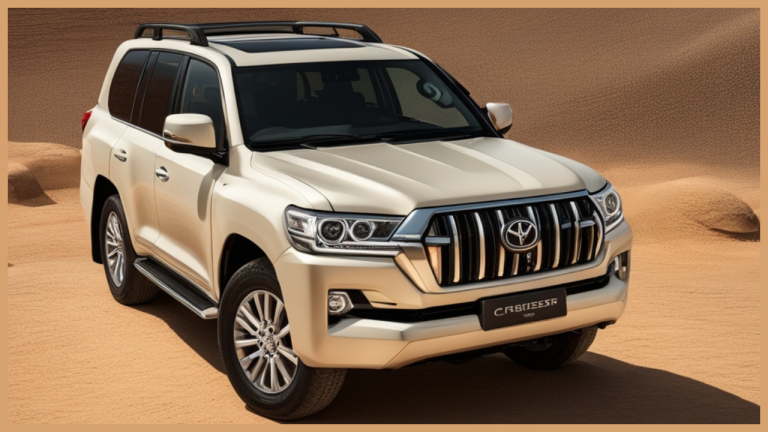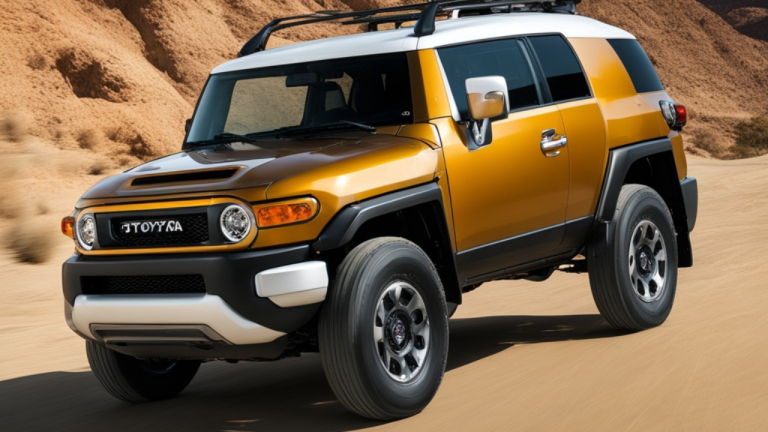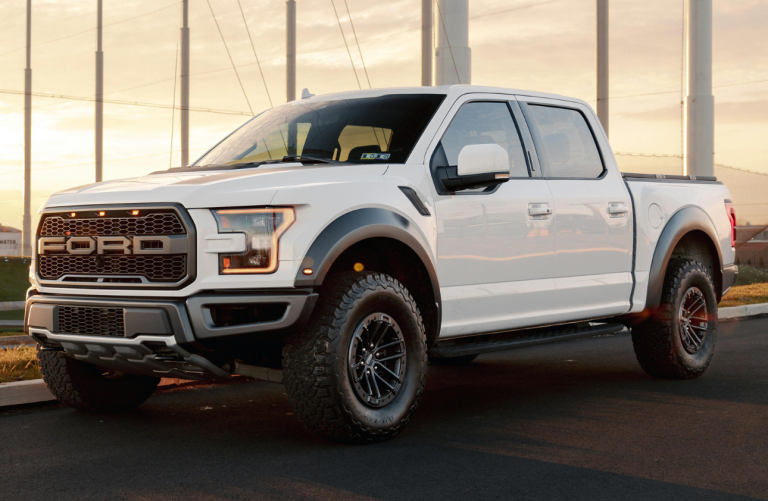The Toyota Supra, an iconic name in the automotive world, has captured the hearts of car enthusiasts for decades. Known for its powerful performance, sleek design, and racing pedigree, the Supra models have evolved significantly over the years. This review delves into the evolution, performance, design, and impact of the various Toyota Supra models.
The Evolution of Toyota Supra Models
The Toyota Supra has gone through several generations, each bringing its unique advancements and charm.
1. First Generation (A40/A50; 1978-1981)
- Engine: Initially, the Supra was derived from the Toyota Celica, featuring a 2.0L or 2.6L inline-6 engine.
- Performance: Offered decent power and performance for its time, setting the foundation for future models.
- Design: Shared many design elements with the Celica but was longer and had a distinct front end.
2. Second Generation (A60; 1981-1986)
- Engine: Equipped with a 2.8L inline-6 engine, producing more power and torque than the first generation.
- Performance: Improved handling and performance, making it more competitive in the sports car market.
- Design: Sportier and more aggressive styling with pop-up headlights and a sleeker profile.
3. Third Generation (A70; 1986-1993)
- Engine: Offered various engines, including a 2.0L turbo, 2.5L turbo, and the notable 3.0L 7M-GTE inline-6 turbo engine.
- Performance: The 7M-GTE engine produced 232 horsepower, significantly boosting the Supra’s performance credentials.
- Design: More aerodynamic with a wider stance, integrated rear spoiler, and advanced electronics.
4. Fourth Generation (A80; 1993-2002)
- Engine: Featured the legendary 2JZ-GTE 3.0L twin-turbo inline-6 engine, capable of producing 276 horsepower (Japanese market) and up to 320 horsepower (US market).
- Performance: Renowned for its exceptional performance, capable of 0-60 mph in under 5 seconds. It became a cultural icon, especially after its appearance in the “Fast & Furious” franchise.
- Design: Bold and aggressive with a distinctive rear wing, sculpted lines, and a driver-focused cockpit.
5. Fifth Generation (A90; 2019-Present)
- Engine: Co-developed with BMW, it features a 3.0L inline-6 turbocharged engine producing 335-382 horsepower, and a 2.0L inline-4 turbocharged engine producing 255 horsepower.
- Performance: Advanced chassis and suspension technology deliver sharp handling and impressive acceleration. The 3.0L version can achieve 0-60 mph in around 4 seconds.
- Design: Modern and sleek with a long hood, short rear deck, and a distinctive double-bubble roof. The interior blends luxury and technology, offering a high-tech infotainment system and premium materials.
Performance Across Generations
Each Toyota Supra model has been known for its performance, with each generation pushing the boundaries further:
- First and Second Generations: Laid the groundwork for the Supra’s reputation with solid performance and reliability.
- Third Generation: Introduced turbocharging, elevating the Supra’s status in the sports car world.
- Fourth Generation: Became a performance legend, with the 2JZ-GTE engine becoming a favorite among tuners and racers for its robustness and tuning potential.
- Fifth Generation: Combines modern technology with performance, offering a blend of speed, handling, and daily usability.
Design Evolution
The design of the Toyota Supra models has evolved significantly, reflecting the trends and technological advancements of their respective eras:
- First Generation: Classic late-70s sports car look with a long hood and short rear.
- Second Generation: More aggressive with sharper lines and pop-up headlights.
- Third Generation: Modern aerodynamic design with integrated features.
- Fourth Generation: Iconic with its large rear wing, wide body, and timeless styling.
- Fifth Generation: Contemporary and dynamic, blending heritage with modern design elements.
Impact and Legacy
The Toyota Supra models have left a lasting impact on the automotive industry and car culture:
- Motorsports: Success in various racing series, including Japanese Touring Car Championship and endurance races.
- Tuning Culture: Particularly the A80’s 2JZ-GTE engine has become legendary for its ability to handle massive power upgrades, making it a favorite in the tuning community.
- Pop Culture: Featured prominently in movies, video games, and media, cementing its status as an automotive icon.
Why is the Toyota Supra so popular?
The Toyota Supra’s popularity can be attributed to several key factors, each contributing to its legendary status among car enthusiasts, tuners, and the general public. Here are the primary reasons why the Toyota Supra is so popular:
- 2JZ-GTE Engine: The fourth-generation Supra (A80) features the iconic 2JZ-GTE engine, a 3.0-liter twin-turbocharged inline-6 that is renowned for its robustness and tuning potential. This engine can handle significant power upgrades, making it a favorite among tuners and racers.
- Acceleration and Speed: The A80 Supra’s stock performance was impressive, capable of 0-60 mph in under 5 seconds and a top speed of around 155 mph, which was remarkable for its time.
- High Modification Capability: The 2JZ-GTE engine is known for its ability to handle massive power increases without major modifications to its internal components. Enthusiasts have pushed this engine to produce over 1,000 horsepower reliably.
- Timeless Aesthetics: The fourth-generation Supra’s design is widely regarded as timeless, with its sleek, aggressive lines, distinctive rear wing, and well-proportioned body. It has aged well and continues to attract admiration.
- Modern Styling: The fifth-generation Supra (A90) combines contemporary design elements with nods to its heritage, appealing to both new buyers and long-time fans.
- Media Presence: The Supra gained massive popularity through its appearances in movies, particularly the “Fast & Furious” franchise, where it was showcased as a high-performance, highly modifiable car. This exposure introduced the Supra to a broader audience and cemented its status as a cultural icon.
- Motorsport Success: The Supra has a strong motorsport heritage, with notable successes in various racing series, including the Japanese Touring Car Championship and endurance races. This racing pedigree adds to its allure and credibility as a performance car.
- Durability: Toyota’s reputation for building reliable and durable cars extends to the Supra, making it a dependable choice for both daily driving and high-performance applications.
- Quality Engineering: The engineering excellence of the Supra, particularly in the A80 model, ensures that it remains a solid and well-built vehicle even decades after its release.
- Driving Experience: The Supra offers a balanced driving experience with strong acceleration, precise handling, and a comfortable ride. It is as capable on a racetrack as it is on a daily commute.
- Modern Technology: The fifth-generation Supra incorporates modern technology and safety features, making it a competitive and attractive option in the current sports car market.
- Aftermarket Support: There is extensive aftermarket support for the Supra, with countless performance parts and modifications available, allowing owners to personalize and enhance their vehicles.
- Passionate Fan Base: The Supra has a dedicated and passionate fan base, with active online communities, clubs, and events that celebrate the car. This community support helps maintain and grow the Supra’s popularity.
Which model of Supra is best?
Determining the “best” model of the Toyota Supra depends on individual preferences and what one values most in a car. Here is a breakdown of the key characteristics of each generation, highlighting their strengths to help you decide which model might be the best for you:
First Generation (A40/A50; 1978-1981)
- Pros:
- Classic and rare, a great option for collectors.
- Vintage design with a unique charm.
- Cons:
- Limited performance compared to later models.
- Fewer modern amenities and safety features.
Second Generation (A60; 1981-1986)
- Pros:
- Improved performance over the first generation.
- Retro styling that appeals to fans of 80s cars.
- Cons:
- Still not as powerful or advanced as later models.
- Limited tuning potential compared to newer generations.
Third Generation (A70; 1986-1993)
- Pros:
- Introduction of turbocharged engines and significant performance improvements.
- Advanced for its time with features like electronically adjustable suspension.
- Cons:
- Heavier and less agile than the fourth-generation Supra.
- Older technology and design.
Fourth Generation (A80; 1993-2002)
- Pros:
- Iconic 2JZ-GTE engine with immense tuning potential.
- Highly regarded for its performance and reliability.
- Timeless design, often considered the most attractive Supra.
- Strong cultural impact, popularized by “The Fast and the Furious” franchise.
- Cons:
- Can be expensive to purchase due to its iconic status and collector demand.
- Older model, so it may lack modern safety and convenience features.
Fifth Generation (A90; 2019-Present)
- Pros:
- Modern technology and safety features.
- Collaboration with BMW, featuring a powerful and efficient B58 engine.
- Excellent balance of performance and comfort.
- Sleek and contemporary design.
- Cons:
- Some purists criticize the BMW partnership, claiming it isn’t a “true” Toyota Supra.
- Less tuning potential compared to the A80’s 2JZ-GTE engine.
Best Model for Different Preferences
- For Collectors and Classic Car Enthusiasts:
- First Generation (A40/A50) or Second Generation (A60): These models offer vintage appeal and rarity.
- For Tuning and Performance Enthusiasts:
- Fourth Generation (A80): The 2JZ-GTE engine’s legendary status in the tuning community makes this the best choice for those looking to modify their car for high performance.
- For a Balance of Modern Comfort and Performance:
- Fifth Generation (A90): Offers contemporary design, modern amenities, and strong performance, making it a great daily driver and a capable sports car.
- For Retro Appeal with Better Performance:
- Third Generation (A70): Provides a nice mix of classic looks and improved performance over the earlier models, though not as advanced as the A80 or A90.
Pro Tips
Each generation of the Toyota Supra has its unique appeal and strengths. The best model for you depends on your specific needs and preferences:
- If you prioritize tuning potential and iconic status: The A80 Supra is unmatched.
- If you want a modern, comfortable, and high-performing daily driver: The A90 Supra is an excellent choice.
- If you are a collector or appreciate classic cars: The A40/A50 or A60 Supras offer vintage charm.
Ultimately, the “best” Toyota Supra model is the one that aligns most closely with what you value in a sports car.
Final Thoughts
The Toyota Supra models represent a journey of continuous evolution, blending performance, design, and innovation. From its humble beginnings to its current status as a high-tech sports car, the Supra remains a symbol of Toyota’s commitment to engineering excellence and driving pleasure. Whether you’re a collector, an enthusiast, or someone seeking a thrilling driving experience, the Toyota Supra models offer something truly special.
Read about another popular cars






